How to look out for your sheep’s pain cues
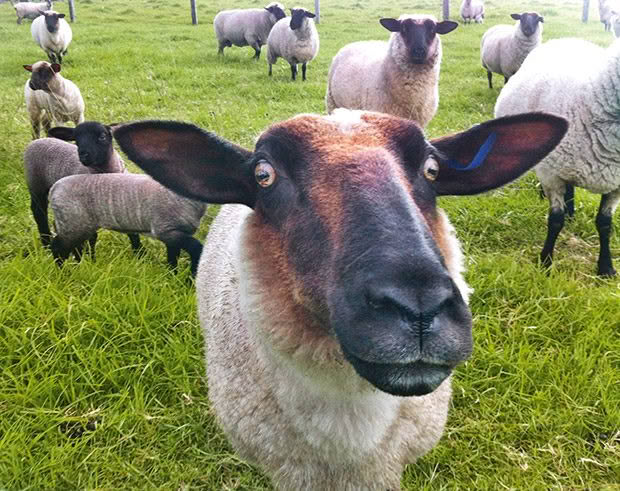
Sheep can’t speak, but you can learn to see what they’re telling you.
Words: Dr Sarah Clews, BVSc
It would be helpful if animals could speak so they could tell us what’s wrong. Sheep seem to confuse people more than any other livestock, and we often miss their pain signals.
They can seem unphased by traumatic wounds, running around on a broken leg. Worse, they can drop dead with no apparent sign of unhappiness, despite being desperately ill.
This behaviour is part of their evolution. All grazing livestock (and poultry) are prey species, and knowing how to evade predators is part of their DNA.
Some species, such as cattle and goats, developed the means to protect themselves with weapons (horns). Others such as sheep, camelids, and poultry took
a different route, perfecting the art of running and hiding their pain.
To appear injured or weak is to flag yourself as an easy target to a predator. On a lifestyle block, you’re often the perceived predator, and three popular block stock – sheep, poultry, and camelids – are among the best con artists in the world. They can easily fake looking ok when they’re not.
WHAT ANIMALS FEEL
You may hear farm animals referred to as stoic, implying they’re strong and hardy. However, the definition of stoic is ‘to endure pain without complaining’.
Many studies have shown that grazing species do feel pain. It’s measured in several ways, including:
■ elevated stress hormones and adrenaline in the blood;
■ increased heart rate;
■ increased respiratory rate;
■ high blood pressure;
■ dilated pupils.
If you could apply an electroencephalogram (EEG) and measure brain activity, you would see their pain being processed in the brain in the same way as humans.
Domestic farm species have endured pain from castrations, tail docking, and dehorning without relief for decades. It has only been addressed this year with new animal welfare laws. Stock undergoing disbudding and dehorning must have pain relief, regardless of age.
It’s also obligatory to use it for castrations and tail docking performed on animals aged over 6 months.
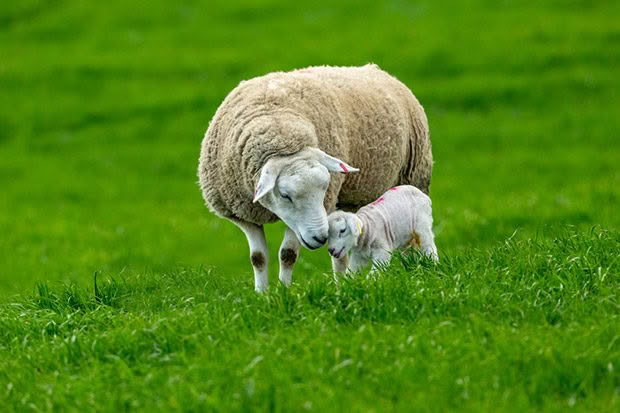
However, these procedures are painful at any age. Pain relief is recommended for any animal, regardless of their age. Farm animals exhibit signs of pain, but you need to know their often stealthy ways of showing it. Some pain behaviours are easy to interpret, such as crying out or limping, but many others are easy to miss.
Moving a lot
Restlessness, rolling, lying down, then standing quickly, and stamping the feet can be a sign of sudden, severe pain. It’s common to see it after ring castrations and tail docking. To give you an idea, humans describe the pain of a ring tourniquet as aching, throbbing, and burning.
Moving less
Sheep may reduce their movements, lie down more, or stand still without grazing and look depressed. It’s more common if the pain has been going on for some time or increases when they move.
Teeth grinding
Teeth grinding indicates pain in many species, including sheep. It’s not that stealthy, as you can easily see and hear it.
Lip rolling
Males usually do this when a female is in heat (the flehmen response). However, a sheep may curl its top lip in a similar way when in pain.
Food and water consumption
Normally, sheep, goats, and cattle lie down and chew their cud when content. A grazing animal in pain may lose its appetite for food and water but it can be difficult to spot. If they’re spending a lot of time standing idle or lying down without chewing their cud, they may be in pain.
Licking lips
This is an interesting behaviour. It’s more closely associated with fear and anxiety. If you notice it, first consider if the environment has changed or if a predator is nearby. If not, it’s a possible sign of pain.
Ear posture
If you’re watching a sheep in the paddock that’s completely unaware of you, her ears will be relaxed and lie flat. When alert, the ears should be pointed upward and facing forward, with the inside of the ear (the pinnae) clearly visible.
If in pain, the ears will flatten, rotating down and backward; when pain is severe, the pinnae can’t be seen at all, and the animal often lowers its head. Ear flicking is another sign of pain.
Facial grimace
The Sheep Grimace Scale measures ear posture, eye closure, and mouth position.
■ half-closed eyes – moderate pain;
■ fully closed eyes – severe pain, especially if she’s aware she is being watched.
■ puckering the lips, turning the normally U-shaped nose into a V-shape.
The Sheep Grimace Scale is used to assess pain levels in research and laboratory settings around the world.
Social changes
If you know your animals, you may notice changes to their social interactions. How other sheep respond to another flock member’s pain depends on their relationship. A sheep in pain might become less social and separate from the flock, a behaviour that would protect the other sheep if a predator took her as easy prey.
Her fellow sheep may respond to her with what we can only assume is empathy, gathering close and showing affection and support. You may also see close family members gather around an individual who has passed away.
Sheep seem to be far more intelligent than historically assumed. In a safe environment, individuals respond to their names, do well at problem-solving tests, and can be clicker trained like a dog.
Females have deep social bonds. They form life-long family groups, as opposed to the social hierarchies we see in cattle. Specialised areas of the brain can recognise other sheep and human faces for over two years.
The frustration you feel chasing sheep around in paddocks is actually testament to their intelligence. While it seems they run from you like blind mad-men, they’re always trying to run from lower to higher ground to gain a vantage point over a perceived predator, from dark to light, or may be creating a deliberate diversion to confuse you.
THE FACES
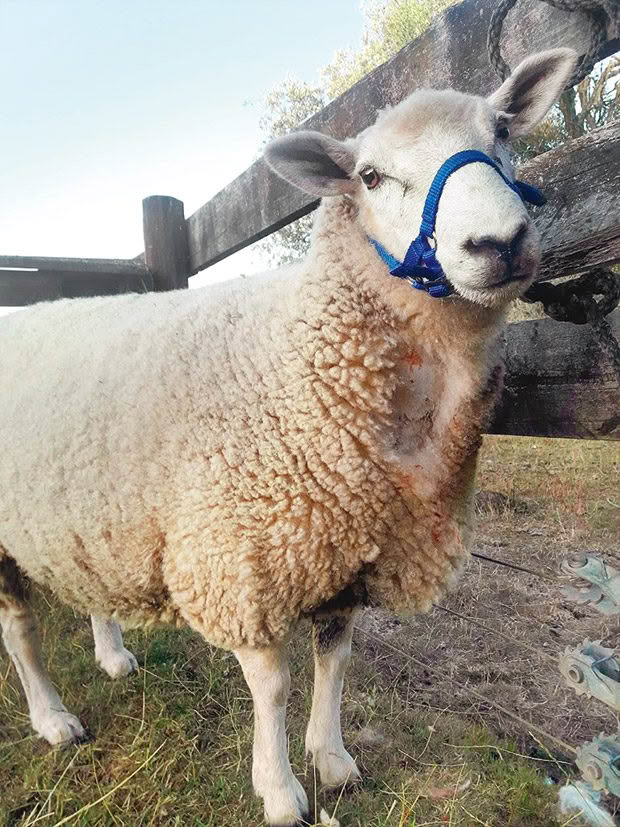
Ears pricked, forward, showing the pinnae. Rounded U-shape to the nose.
No pain. In the presence of a human, the head is upright, ears alert, pinnae clearly visible from the front. The eyes are bright and wide, and the nose has a soft U-shape.
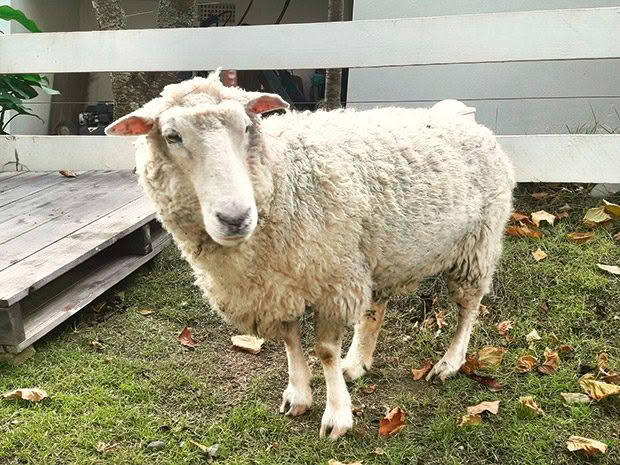
Tight facial muscles. Ears flatter, pinnae facing downward.
Moderate pain. The head is held lower. Ears are flat, with the inner pinnae rotated toward the ground. The eyelids appear relaxed, but the nose is beginning to form a V-shape as the facial muscles tighten.
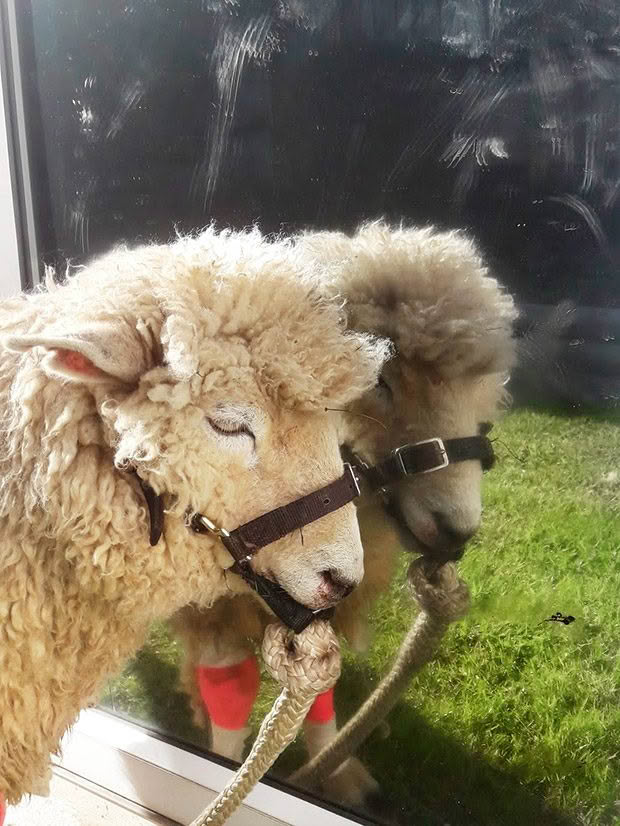
Ears facing back, no sign of pinnae. In the reflection you can see a V-shape to the nose.
Severe pain. The head is significantly lowered, despite being in the presence of a human. Eyes are almost entirely closed, and the ears are rotated down and backward. The inside of the ears aren’t visible, and the nose shape is like an elongated V.
4 PAIN RELIEF OPTIONS FOR YOUR STOCK
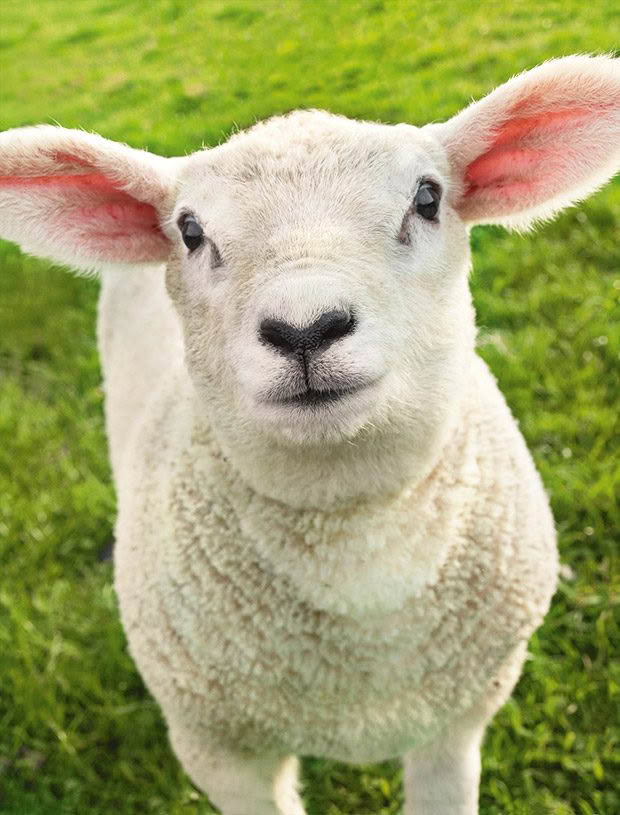
Some of these options are specifically designed to be used at home before tail docking and castration. Ask your vet about the options they can offer.
1. A numbing agent: Injected by a vet to numb an area, short-lived (90 minutes).
2. Injectable anti-inflammatory
These are from the ibuprofen family of drugs and will last 1-3 days, depending on the species.
3. Oral anti-inflammatory
A gel applied to the gums before a painful procedure. Gives 24 hours pain relief. A similar product can be added to milk in bottle-fed babies.
4. A numbing cream: Rubbed on the skin to produce a skin-deep numbing sensation, lasts 90 minutes.
Love this story? Subscribe now!
 This article first appeared in NZ Lifestyle Block Magazine.
This article first appeared in NZ Lifestyle Block Magazine.
